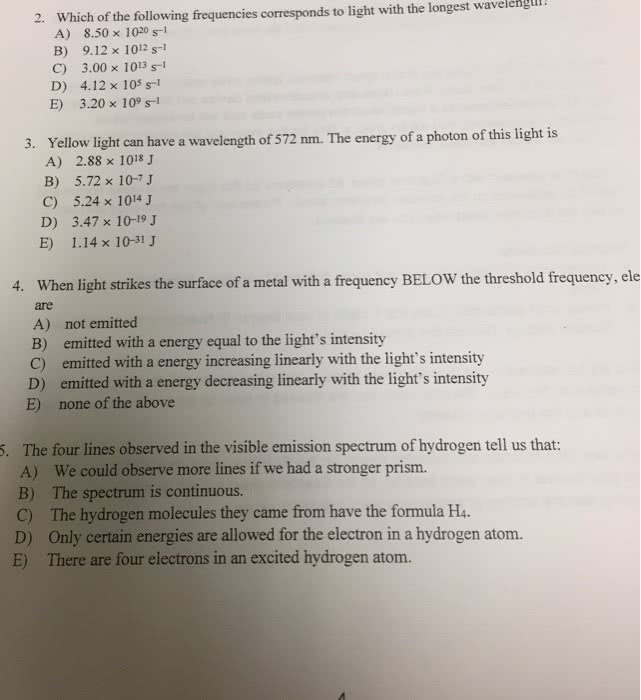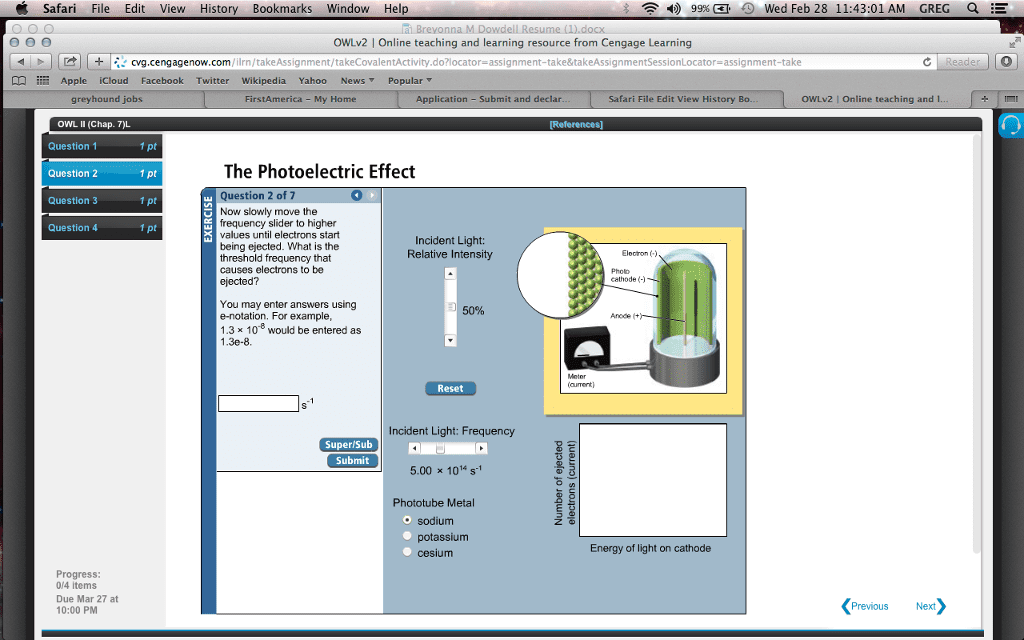01:160:161 Lecture 4: Chem lecture 4 notes
Document Summary
A phototube consists of an emitter coated with a metal which is capable of releasing. Incident light shines on the emitter, and the emitted electrons are attracted to the collector, starting a photoelectric current, which is read on the meter. The energy of the light ionizes the metal, and the flow of electrons creates electricity. If you vary the frequency of the incident light, it is found that there is a certain minimum threshold frequency below which no electrons are emitted. This threshold frequency (vo) depends on the particular metal of the emitter, but its independent of intensity. You could have a bright light (high intensity) but if you are below threshold frequency, no electrons are emitted. If you are above the threshold, the kinetic energy of the emitted electrons varies linearly with the frequency of the incident light. We perceive the light as a stream of particle-like units called photons.



